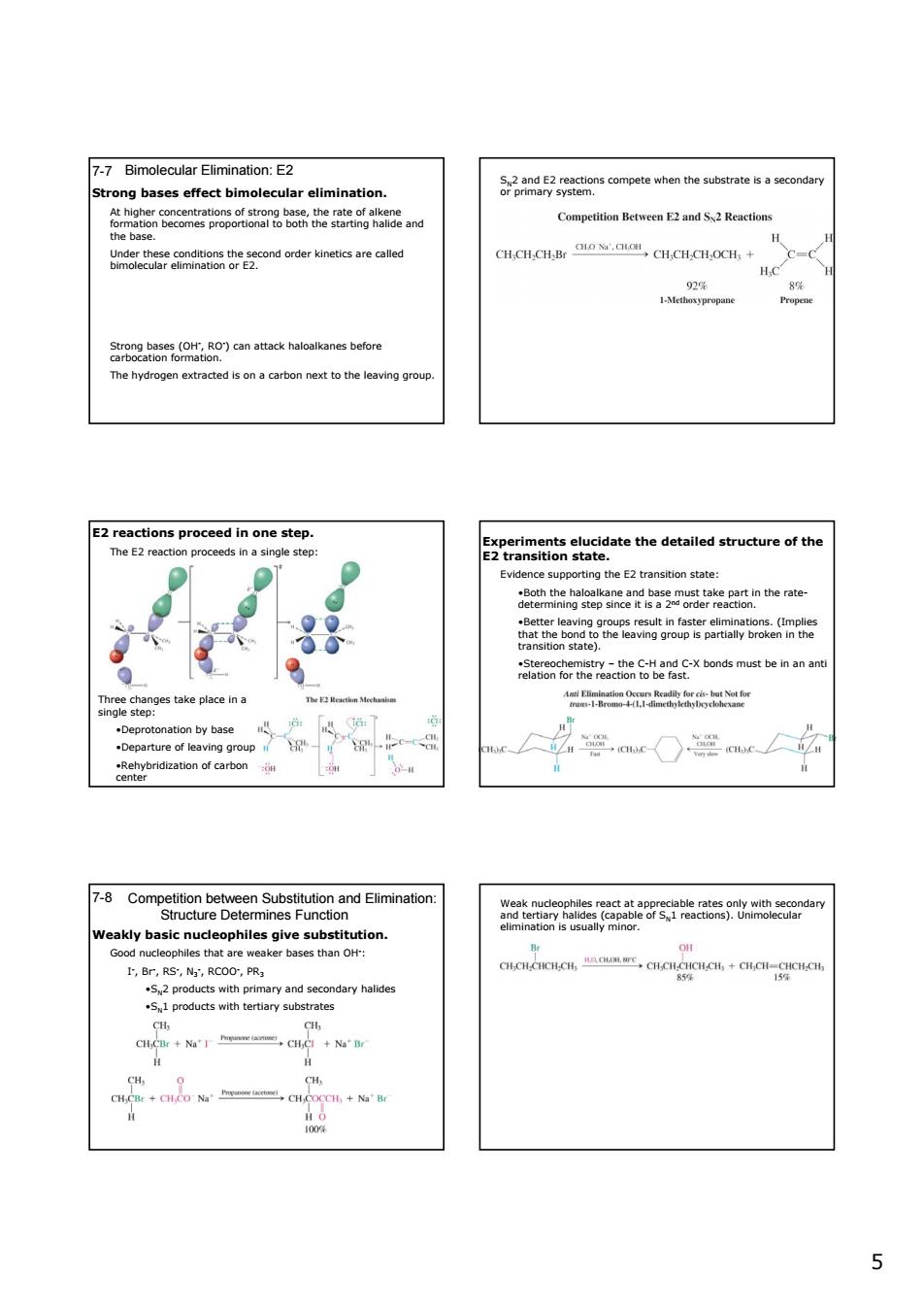正在加载图片...

7-7 Bimolecular Elimination:E2 ases effect bimolecular elimination po品器n nmiehseomeae2coadoderinetisarealed CHCHCHB CHCH.CH.OCH, ar8agateeieosao)canatackhaoelkanebetbre The hydrogen extracted is on a carbon next to the leaving group E2 reactions proceed in one step. The E2 rea on state 6geewoR0snybaehe Conds must be in nan ne 7-Compeon: 20a8r Weakly basic nucleophiles give substitution. ry and sec ondary halldes products wth tertiary 55 7-7 Bimolecular Elimination: E2 Strong bases effect bimolecular elimination. At higher concentrations of strong base, the rate of alkene formation becomes proportional to both the starting halide and the base. Under these conditions the second order kinetics are called bimolecular elimination or E2. ( ) + k 3 2 32 2 3 - -1 -1 3 3 CH CCl + Na OH CH =C(CH ) + NaCl + H O rate = k[(CH ) CCl][ OH] mol L s − ⎯⎯→ Strong bases (OH- , RO- ) can attack haloalkanes before carbocation formation. The hydrogen extracted is on a carbon next to the leaving group. SN2 and E2 reactions compete when the substrate is a secondary or primary system. E2 reactions proceed in one step. The E2 reaction proceeds in a single step: Three changes take place in a single step: •Deprotonation by base •Departure of leaving group •Rehybridization of carbon center Experiments elucidate the detailed structure of the E2 transition state. Evidence supporting the E2 transition state: •Both the haloalkane and base must take part in the ratedetermining step since it is a 2nd order reaction. •Better leaving groups result in faster eliminations. (Implies that the bond to the leaving group is partially broken in the transition state). •Stereochemistry – the C-H and C-X bonds must be in an anti relation for the reaction to be fast. Competition between Substitution and Elimination: Structure Determines Function 7-8 Weakly basic nucleophiles give substitution. Good nucleophiles that are weaker bases than OH- : I- , Br- , RS- , N3 - , RCOO- , PR3 •SN2 products with primary and secondary halides •SN1 products with tertiary substrates Weak nucleophiles react at appreciable rates only with secondary and tertiary halides (capable of SN1 reactions). Unimolecular elimination is usually minor